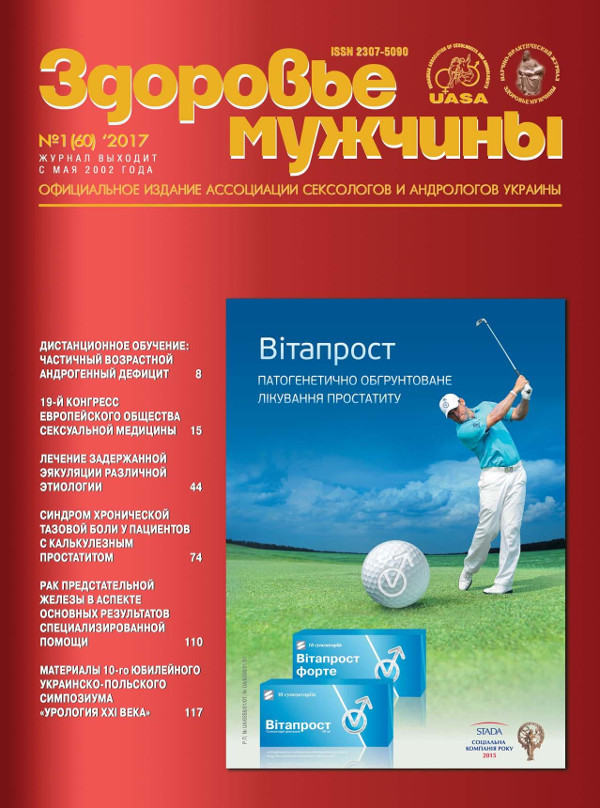Efficacy of the treatment of renal bleeding after a percutaneous nephrolithotomy
##plugins.themes.bootstrap3.article.main##
Abstract
Materials and methods. On the basis of the urological clinic of the Lviv National Medical University named after Daniil Galitsky, the results of 2223 cases of cervical cancer were analyzed in patients with various types of nephrolithiasis. Prior to surgery, patients underwent laboratory tests: a general blood test, urine, a biochemical blood test, a coagulogram. The presence of concrements was confirmed by clinical, radiological and ultrasound examinations. Patients with renal bleeding additionally performed aortography and selective angiography of the kidney vessels.
Results. According to the results of the study, 63 (2.83%) patients had renal bleeding after performing cervical cancer. The article presents the results of the study of a clinical case of successful angiography of the kidney vessels with subsequent superselective embolization and a clinical case with late postoperative hemorrhage.
Conclusion. With the diagnostic and therapeutic purpose for complicated renal bleeding, which does not lend itself to conservative therapy, bolus angiography of the kidney vessels is indicated. It is proved that nephrectomy is a method of selecting renal bleeding in case of ineffectiveness or impossibility of performing super selective embolization.
##plugins.themes.bootstrap3.article.details##

This work is licensed under a Creative Commons Attribution 4.0 International License.
Authors retain the copyright and grant the journal the first publication of original scientific articles under the Creative Commons Attribution 4.0 International License, which allows others to distribute work with acknowledgment of authorship and first publication in this journal.
References
Мартов А.Г. Осложнения чрезкожной нефролитолапаксии / Мартов А.Г., Ергаков Д.В., Андронов А.С., Лисенок А.А. / Достижения в лечении заболеваний верхних мочевых путей и стриктуры уретры // Материалы Пленума правления Российского общества урологов. – М., 2006. – С. 144.
Akman T., Binbay M., Sari E. et al. Factors affecting bleeding during percutaneous nephrolithotomy: single surgeon experience // J. Endourol. – 2011. – Vol. 25. – P. 327–333.
Aminsharifi A., Alavi M., Sadeghi G., Shakeri S., Afsar T. Renal parenchymal damage after percutaneous nephrolithotomy with one-stage tract dilatation technique: a randomized clinical trial //J. Endourol. – 2011. – Vol. 25 – P. 927–931.
Kessaris D.N., Bellman G.C., Pardalidis N.P., Smith A.D. Management of hemorrhage after percutaneous renal surgery // J. Urol. – 1995. – Vol. 153. – P. 604–608.
Kukreja R., Desai M., Patel S. et al. Factors affecting blood loss during percutaneous nephrolithotomy: prospective study // J Endourol. – 2004. – Vol. 18. – P. 715–722.
Liatsikos E.N., Kapoor R., Lee B. et al. Angular percutaneous renal access. Multiple tracts through a single incision for staghorn calculus treatment in a single session // Eur. Urol. – 2005. – Vol. 48. – P. 832–837.
Meretyk S., Gofrit O.N., Gafni O. et al. Complete staghorn calculi: random prospective comparison between extracorporeal shock wave lithotripsy monotherapy and combined with percutaneous nephrostolithotomy // J. Urol. – 1997. – Vol. 157 (3):780–6.
Segura J.W. Role of percutaneous procedures in the management of renal calculi. // Urol Clin North Am. – 1990. – Vol. 17. – P. 207–216.
Stoller M.L., Wolf J.S., St Lezin M.A. Estimated blood loss and transfusion rates associated with percutaneous nephrolithotomy // J. Urol. – 1994. – Vol. 152. – P. 1977–1981.





